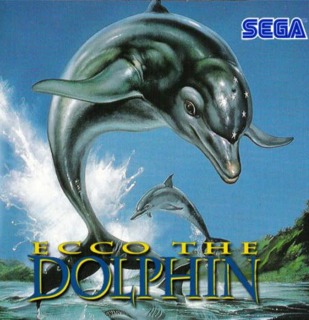Great adventure!
The original Ecco the Dolphin was a game released in 1992 for the Sega Mega Drive and Sega Genesis. It was conceived and designed by Ed Annunziata and developed by Novotrade International, and the Sega CD version featured a soundtrack by composer Spencer Nilsen. The gameplay was essentially side-scrolling, although it scrolled vertically as well, since Ecco is a swimming creature. Attacking enemies was accomplished by making Ecco ram into them at high speeds. Swimming could be made progressively faster by tapping a certain button, and the speed could be maintained by holding it down. Players could perform a purely aesthetic spin in the air when jumping out of the water. Two features of the game played on actual dolphin habits. One was a sonar map that could be brought up by making Ecco "sing" (this was also how he talked to other Singers as well as interact with certain things such as clams and Glyphs) and then holding the button down to make the "song" return to him, a la echolocation in real dolphins. The other was the fact that Ecco, being a mammal, had to surface periodically for air, or else find an air vent. Ecco would drown if his 'air meter' ran out. His health was measured by a separate meter; it was depleted by enemies or when his air meter had run out, and it was recharged by eating fish, "singing" to clams, or, later in the game, singing to special Glyphs and statues. Ecco's song could be optionally 'upgraded' at two points in the game; one allowed it to be used in combination with a charge as a long-range weapon, and the other made singing at a shark temporarily disorient it.
The Glyphs were crystals that would respond somehow if Ecco sang to or touched them. Some blocked paths, and a 'Key-Glyph' had to be found in such cases to pass. Others gave information, and a few in later levels would replenish health and air and give Ecco temporary invulnerability.
The original Ecco had what is considered by many to have a very high level of difficulty. Among many other things, the twisting underwater passages in many levels, combined with the air limit, often led to death and frustration. Many jumps out of the water, over small islands and ruined buildings, were also difficult. Some levels featured moving obstacle courses where a mis-timed movement meant instant death. The game featured infinite tries and levels divided up with a password system.

